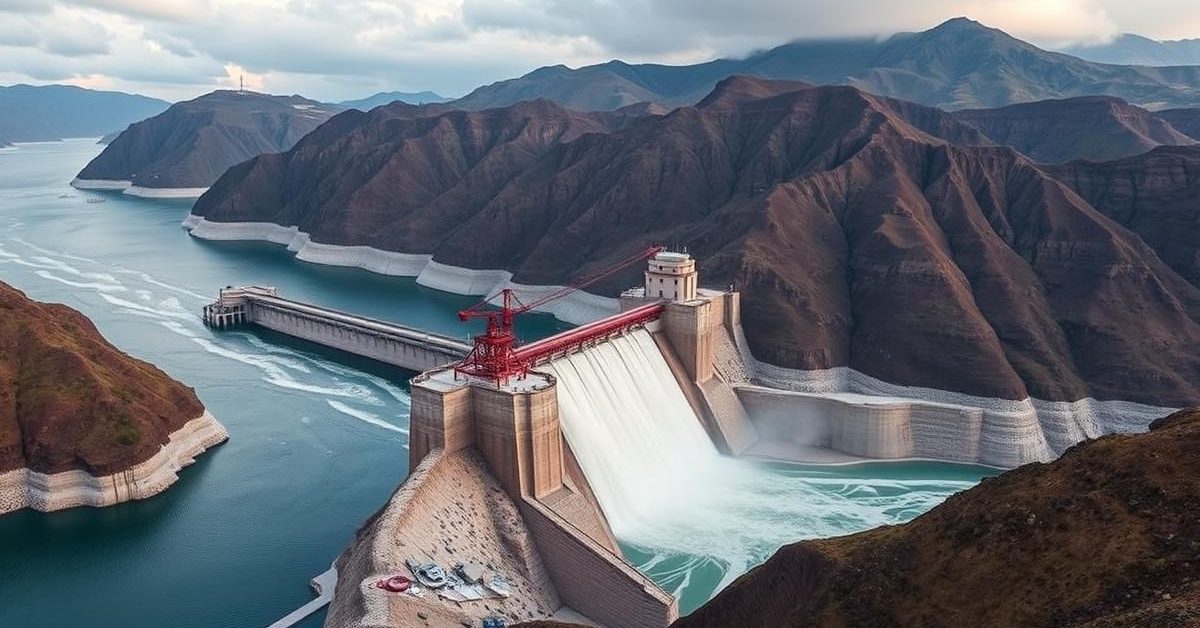This news roundup covers China’s new Brahmaputra dam, debates over deep-sea fishing in India, progress in India-EU free trade talks, and the Supreme Court’s review of judicial timelines for gubernatorial and presidential assent to bills.
China’s Brahmaputra Dam Sparks Regional Concerns
China has officially commenced construction on a colossal USD 167.8 billion dam project on the Brahmaputra River in Tibet, close to the Indian border. This mega-project, known as Yarlung Zangbo, is expected to generate over 300 billion kWh of electricity annually, enough to power more than 300 million people.
The ambitious hydropower venture has raised significant concerns in downstream countries, particularly India and Bangladesh. There are fears about potential impacts on water flow, environmental degradation, agricultural productivity, and biodiversity in these lower riparian regions.
Deep-Sea Fishing Policy Under Fire
The Union Fisheries Ministry’s decision to permit large deep-sea vessels to operate beyond India’s sovereign maritime zone has sparked strong opposition from traditional fishing communities. The All India Deep Sea Fishers’ Association warns that this move, part of the government’s 2020 Blue Economy policy, could severely harm small-scale traditional fishers.
The association argues that allowing more large vessels will worsen existing ecological and economic challenges. They advocate for revitalizing small-scale fishing through modernization and fair subsidies instead of pushing for industrial deep-sea operations.
- India’s Exclusive Economic Zone (EEZ) extends 200 nautical miles from its coast.
- Small-scale fishing communities fear displacement and resource depletion.
- The debate highlights the balance between economic growth and sustainable marine practices.
India-EU Trade Talks Advance on Key Chapters
India and the European Union have made significant strides in their Free Trade Agreement (FTA) negotiations, aiming for a deal by year-end. The 12th round of talks saw an “in principle” closure of the digital trade chapter and substantial progress on services and investment.
Resolving differences in services is crucial, as the EU is a major global investor and services account for over 70% of its foreign direct investment. Discussions around cross-border data flows are particularly sensitive, given India’s stance on data localization for privacy and cyber sovereignty.
- Digital trade and services are central to the ongoing FTA negotiations.
- India prioritizes data localization for economic and security reasons.
- Progress on investment texts suggests a breakthrough on long-standing EU concerns.
Supreme Court to Address Presidential Reference on Bill Assent
The Supreme Court will review a Presidential reference on July 22 concerning the timeline for Governors and the President to act on bills passed by state assemblies. This follows the apex court’s April 8 ruling, which, for the first time, set a three-month deadline for the President’s decision on such bills.
President Murmu has posed 14 questions, seeking clarity on whether the actions of Governors and the President are subject to judicial review, and if courts can impose timelines when the Constitution does not specify them. The reference also queries if judicial orders can override constitutional powers.
- The reference invokes Article 143 of the Constitution, pertaining to the Supreme Court’s advisory jurisdiction.
- It questions the justiciability of executive discretion and judicial overreach.
- A five-judge bench will hear this significant constitutional matter.
Hindi’s Journey in Southern India
Despite ongoing political discussions about Hindi imposition, the language has a deep-rooted and organic history in South India. Mahatma Gandhi played a pivotal role by establishing the Dakshin Bharat Hindi Prachar Sabha in Madras (Chennai) in 1918, aiming to promote Hindi as a link language for the freedom movement.
Over the decades, Hindi’s presence grew through cultural initiatives and mass media, including radio programming and Doordarshan’s Satellite Instruction Television Experiment (SITE) in the 1970s and ’80s. While some instructional programs offered regional language options, news and entertainment were predominantly in Hindi, aiding its spread.
The National Education Policy of 1968 recommended a three-language formula (Hindi, English, and regional languages), which most Southern states adopted, except for Tamil Nadu, which maintains a two-language policy. Article 351 of the Constitution mandates the Union to promote Hindi’s spread while respecting India’s diverse linguistic culture.















